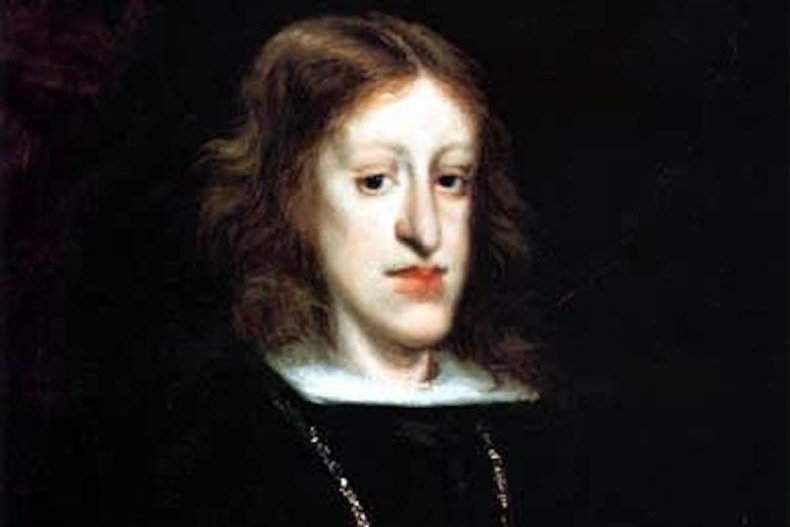King Charles II of Spain boasted one of the most pronounced Habsburg jaws, a facial deformity characterized by a protruding lower jaw and lip. The last of the Habsburg line was unable to produce an heir. Photo by
Don Juan Carreño de Miranda
Dec. 2 (UPI) -- New research suggests prodigious amounts of inbreeding best explains the protruding lower jaw that characterized many of the Spanish and Austrian kings and their wives that made up the Habsburg dynasty.
Scientists in Spain and South Africa analyzed royal portraits and family trees to find out whether there was a link between facial deformities and a person's degree of relatedness among members of the Habsburg dynasty.
For two centuries, the alliance of crowns known as the Habsburg Monarchy, or House of Habsburg, controlled much of Europe. Generations of intermarriage helped the dynasty maintain political power.
Intermarriage was common among royal families, but the no European monarch practiced inbreeding as intensely as the Habsburgs. The extraordinary level of inbreeding eventually doomed the dynasty, as the final Habsburg monarch proved impotent, unable to produce an heir.
But the latest study, published Monday in the Annals of Human Biology, suggests impotency wasn't the only biological consequence of the dynasty's inbreeding. Members of the House Habsburg also suffered an overgrown lower jaw, yielding a crossbite and hollow-looking cheeks.
The study's authors recruited 10 maxillofacial surgeons to diagnose the facial deformities of 15 members of the Habsburg dynasty using several dozen portraits as reference. The surgeons were asked to identify the 11 characteristics of mandibular prognathism, a deformity known as Habsurg jaw, as well as the signs of maxillary deficiency, another jaw-related deformity.
Researchers also calculated the degree of relatedness of the 15 Habsburg members by analyzing an extensive family tree featuring 20 generations and some 6,000 individuals.
Their work -- and the diagnoses of the participating surgeons -- revealed a strong link between the degree of inbreeding and the degree of mandibular prognathism. Scientists also identified a link between inbreeding and two of the seven facial features that characterize maxillary deficiency.
"We show for the first time that there is a clear positive relationship between inbreeding and appearance of the Habsburg jaw," lead researcher Roman Vilas, a professor at the University of Santiago de Compostela in Spain, said in a news release.
While researchers acknowledged that it's possible the Habsburg jaw was the result of a chance appearance of traits, they argue the odds suggest the deformity was produced by inbreeding.
Inbreeding increases the odds that offspring will inherit identical forms of a gene from both parents. Because mandibular prognathism is associated by diminished genetic fitness, researchers suggest it should be considered a recessive trait.
"While our study is based on historical figures, inbreeding is still common in some geographical regions and among some religious and ethnic groups, so it's important today to investigate the effects," said Vilas. "The Habsburg dynasty serves as a kind of human laboratory for researchers to do so, because the range of inbreeding is so high."















